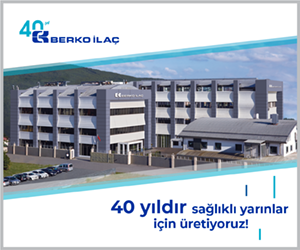Silikon Vadisi robot teknolojisi şirketi Zipline, Ruanda hükümetiyle, özel teslimat dronları kullanarak Ruanda’daki hastanelere ve kan nakli merkezlerine kan tedarik etmek için ortaklık kurdu.
Zipline sözcüsü Justin Hamilton, aşılar, anti-venomlar ve diğer kritik ilaçları içerecek şekilde tıbbi ürün çeşitlerini de genişleteceğiz.
Drones, or unmanned aerial vehicles (UAV), have been used for more than three decades, but in the last few years drones are increasingly being developed and used for commercial purposes.
But while inventors and entrepreneurs in Western countries struggle with strict regulations, many African countries are proving very innovative and accepting in terms of drone usage across industries.
From Kigali to Khartoum, pioneers are using drones to tackle some of the continent’s current challenges.
In Rwanda, drones deliver blood to almost half of the country’s blood transfusion centres. In Malawi, UAVs deliver HIV test kits to and from remote parts of the country. Elsewhere, drones are used to combat poaching, track illegal maritime activities and oil spills, or to augment safaris.
Al Jazeera spoke to some of Africa’s drone pioneers to find out how gaining a bird’s-eye view is helping to shape the future – and uncover the past – of some of the continents 1.2 billion people.
 |
| By using drones, Zipline can cut the delivery time for essential blood products by several hours [Zipline] |
Never before have doctors and patients in remote Rwanda received blood so quickly and efficiently. Silicon Valley robotics company, Zipline, has partnered with the Rwandan government to deliver blood to hospitals and blood transfusion centres across Rwanda – using special delivery drones.
Requests are made online on Zipline’s order site, via phone, text message or WhatsApp. The hospital receives a message one minute before the drone reaches its destination and drops the package, which is attached to a parachute.
Zipline spokesperson Justin Hamilton discusses drone logistics and the idea behind “the world’s first, and only, national drone delivery service”:
“The mission of the company is bringing life-saving medicine to the most difficult to reach parts of the world.
Our first deployment has been in Rwanda, where we are delivering blood and blood products to transfusion clinics across the western half of the country. We contract directly with the government to provide this service.
Two-thirds of our deliveries are routine stock-ups and around a third are for emergency requests.
The biggest value is in the drones’ ability to access all of these locations faster than was ever before possible. [The facilities] all have roads going to them, so it’s not that there aren’t roads or that you can’t drive there, but it’s that in a life-threatening situation you can’t drive there fast enough.
In a life-threatening situation you often only have minutes…. So what we were able to do is cut delivery time down from several hours, and in the worst cases more than a day, to around 30 minutes.
Blood spoils very quickly and needs to be kept refrigerated, so all too often what you experience is a medical stock out: whatever it is you need isn’t there and it has to be acquired from somewhere else, usually from a central medical warehouse or facility in a big city that can be several hours drive away.
[But] in a life-threatening situation you often only have minutes and not hours to deal with it. So what we were able to do is cut delivery time down from several hours, and in the worst cases more than a day, to around 30 minutes.
We are helping to save lives almost every day. Since our launch [in October 2016], we have made more than 2,000 deliveries of life-saving medication and many of them have been in life-threatening situations.
This year, we will be expanding to open a second base in Rwanda to serve the other half of the country. By the time the entire operation is fully up and running, it will include 21 clinics.
We will also be expanding the types of medical products we deliver from blood alone to include vaccinations, anti-venoms and other critical medications.
Zipline’s goal is to build instant delivery for the world, we will be expanding across Africa this year… and we will continue to expand and bring this life-saving service to people all over the world.”
Massive Dynamics: The drone fighting desertification in Sudan
 |
| Mohammed and Hatem have been working for years to build a drone capable of tackling desertification [Lucy Provan/Al Jazeera] |
After decades of drought and deforestation, millions of hectares of Sudan’s semi-desert have turned into desert. The sand has swallowed homes and farmland, forcing many villagers to move southwards.
Experts say that without intervention, parts of the conflict-ridden African country could become uninhabitable as a result of climate change.
Determined to stop the desert from swallowing up their country, two Sudanese inventors have spent years building Sudan’s first flying robot farmer – a drone that can plant trees, increase harvests and reduce crop damage.
Mohammed Alhatim Ahmed Ibrahim and Hatem Mubarak Hassan, from Massive Dynamics, discuss their project and what inspired them:
Seventy percent of Sudan’s agricultural land is under threat of desertification, so in order to do something about it and find real solutions to the problem, we have to use advanced technology that can be made with Sudanese hands and implemented [by Sudanese] so it can inspire many people to act.
The drone’s main function is to plant the seeds of Acacia trees from the sky. Researchers say this is the best way to fight desertification, because the roots of these Acacia trees can stop the movement of the sand.
The second thing the drone does is remote agricultural sensing, which is a way of conducting plant health assessment. By doing that assessment, all the researchers and NGOs will be able to access the information needed to make decisions on the ground.
I feel it’s a great responsibility to help [combat desertification] using technology, not only drones. We have to think beyond drones so we can stop the sand.
We can’t do it alone, we have to stand all together: the government, the community and the NGOs – everyone – we have to support each other. It’s an emergency. [People] need help and they need it now! Not tomorrow, not the day after tomorrow.
This project is really for our people, our families.”
| It is very hard to lose a part of your country, a part of your civilisation and your culture, every day. |
Hatem: “It is very hard to lose a part of your country, a part of your civilisation and your culture, every day.
We haven’t been able to buy any equipment from outside Sudan, or get any technical support [because of sanctions]. It’s like a big wall all around Sudan.
This situation takes your dreams away from you, you can feel it. Your dream disappears day after day, but I can’t let that happen to us, I can’t let that happen to our project.
We have this new kind of technology, we have to use it against desertification.
We are part of a big community, the Sudan community and we have to take the lead. [We] have to be on the front to make a real impact and a real difference to our community.”
Uncovering Nigeria’s past: Drones in archeology
 |
| Drones have aided the discovery of abandoned settlements, pottery sheds, and a series of other archaeological materials in the ancient Yoruba city of Ile-Ife [Getty Images] |
Archaeologists across the globe are increasingly discovering that using drones is one of the cheapest and easiest ways to find out what is hidden below the ground.
In Nigeria, archaeologists have started to use drones to detect, map and view archaeological sites in Ile-Ife, the cradle of the Yoruba civilization.
Saving archeologists a considerable amount of time and money, the UAVs have aided the discovery of city walls, abandoned settlements, pottery sheds, ceremonial pits, and a series of other archaeological materials created by the Yoruba people during the 10th-12th centuries.
Adisa Ogunfolakan, director of the Nigerian Natural History Museum, explains how the aerial information gathered by drones helps archeologists to uncover Nigeria’s past.
“We started using drones in 2015 for some of our archaeological work in Ile-Ife to help capture images of the archaeological site.
Having an aerial view of the site means we are able to see its topography. We can see where city walls lie, which helps to guide us with regards to where to excavate and which areas to concentrate on.
The technology has enhanced our work, helping to show us the orientation of the land. That has aided us in discovering abandoned settlements, pottery sheds, and a series of other archaeological materials created by the Yoruba people during the 10th-12th centuries in Ile-Ife.
Drones have also been used to identify sites in the town of Ilara in southwestern Nigeria. Aerial imagery helped to discover the extent of a trench carved in that area, one of the largest we have ever discovered, which ran to around 160km.
This is a new way of doing archaeology, we are moving from analogue to digital. Analogue archaeology involves moving around sites [on foot] to identify where you have materials. But using drones, alongside other techniques and methods, delivers us ways of digitally identifying things.




















